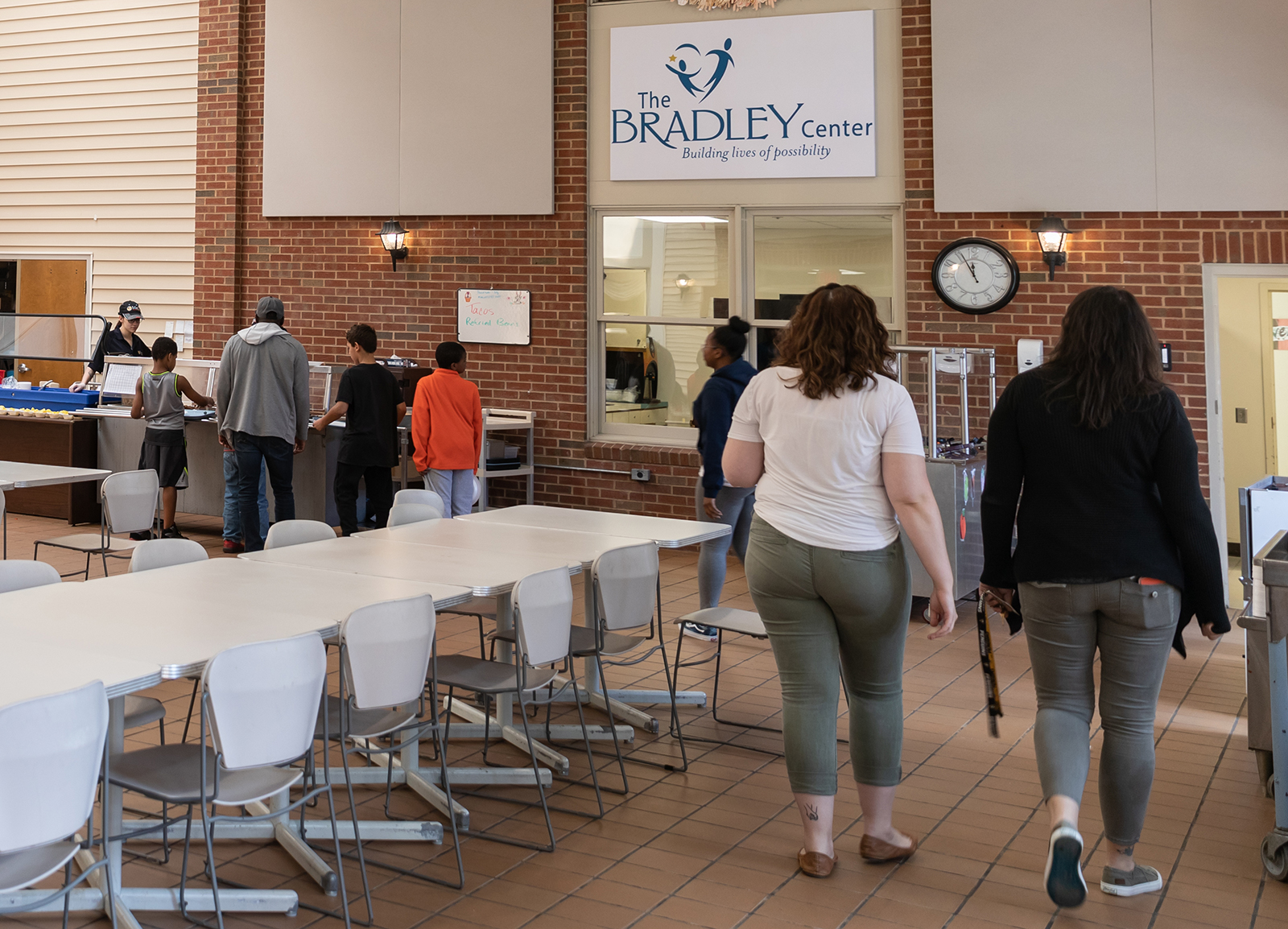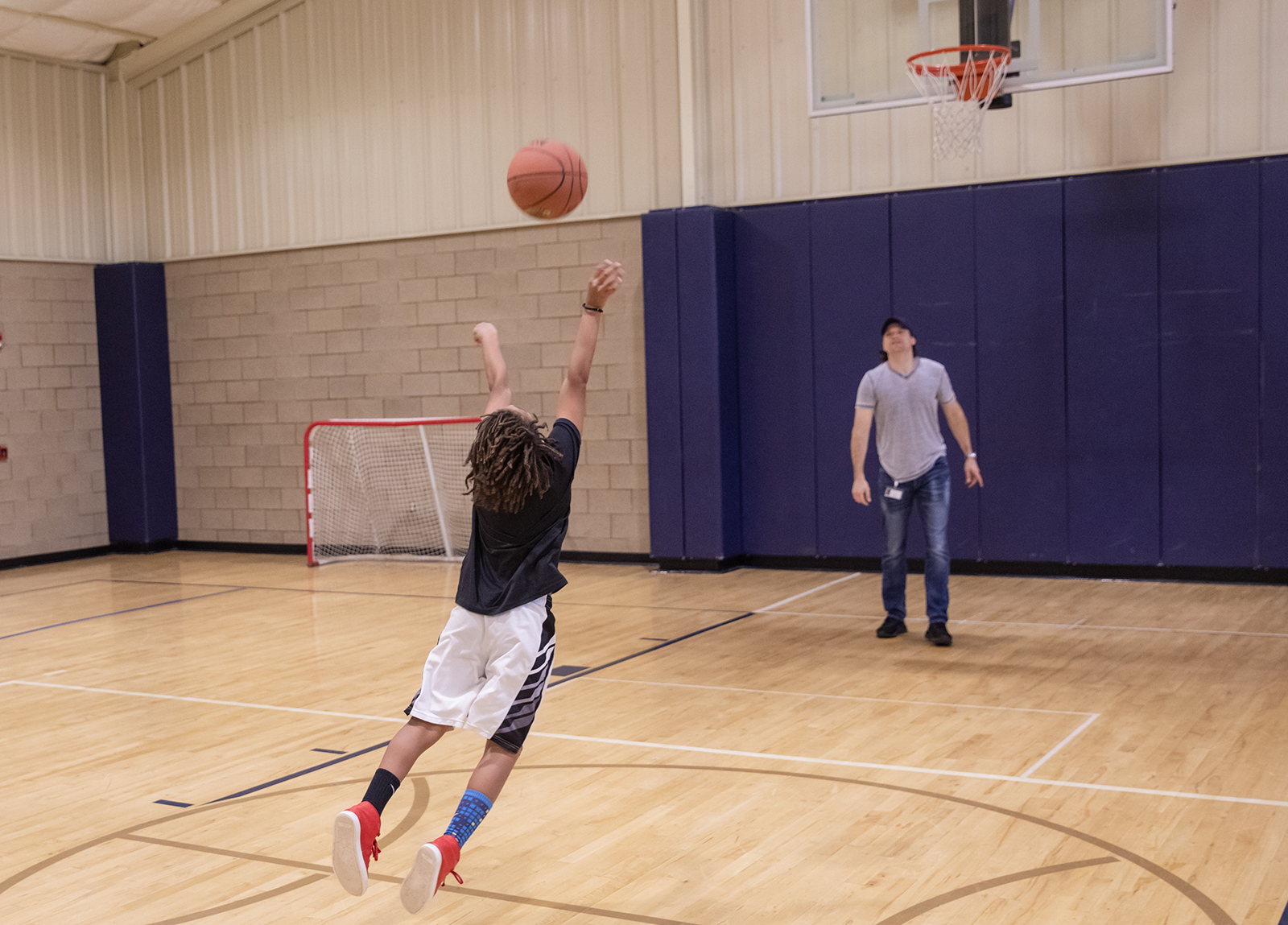The Student Experience
A Typical Day for Bradley Students
Bradley youth learn in a structured classroom environment with teachers who specialize in helping them overcome their specific learning or behavioral challenges. Here are some examples of what daily life is like for a Bradley School student.
Establishing a Learning-Focused Routine
Some students attend a full day of classes at Bradley for five days a week, while others only visit for specific classes or on certain days. Regardless of how often a child attends classes at Bradley, each student follows an Individualized Education Plan (IEP) that is designed to address his or her particular needs while learning and participating in class.
Morning Drop–Off
Upon arriving by bus to Bradley, commuter students disembark at the front entrance and are greeted by Bradley staff. They then proceed to the check-in area where they participate in a security check with Bradley staff and store their outerwear, electronics, and any items not able to be taken into the school program. Students are then given the option to eat breakfast after arrival.
How Classes Work
Each student is assigned a classroom that serves as a homeroom learning community. Each homeroom has its own unique schedule to include academic core classes, specials, and related arts classes. All students start their day with their homeroom learning community and participate in a community meeting, a review of the schedule and any special events, and have the opportunity to enhance their prosocial skills through various activities.
Elementary, middle school, and some high school homeroom learning communities stay together as a class throughout the day to run a specified weekly schedule. While our middle school students stay in their homeroom areas for all subjects, our middle school teachers rotate between the homerooms to deliver instruction in the core academic subjects. Most of our high school homeroom communities are together for homeroom period and electives periods. During the other periods of the day, our high school students transition to different classrooms for academic core classes similar to that of a typical public school setting. All class periods are 40 minutes in duration.
Counseling Sessions
Students who commute from home are offered to meet with a school counselor on a schedule as determined by their IEP teams. Some students meet with the school counselor on a weekly basis, and others on a less frequent basis depending on the level of need. School counselors are also available to assist with day-to-day concerns as they arise. Individual counseling sessions are scheduled in a manner that ensures students do not miss their core class periods.
School counselors are also available to assist students who are transitioning to post-secondary education or employment, who need guidance in their decision-making, or who need additional support in accessing community resources.
Lunch
Lunch is a time when students are able to practice their social skills with their homeroom learning community. Each homeroom is assigned one of the three lunch periods in the Bradley Atrium. Occasionally, students will take their lunch period in their classrooms while they participate in an incentive lunch activity, such as a movie or a learning community activity.
Gym and Recess
Students are offered physical education classes with their homeroom learning communities according to the guidelines outlined by the Pennsylvania Department of Education. The gym area is also utilized for school-wide activities, sporting events, and assemblies.
School Nurse
Students have access to a school nurse for medical needs as they arise, as well as administration of any medication that needs to be distributed throughout the school day.
Homework
Homework is assigned to students according to age and grade level and at the discretion of the teachers. Since many of our students are working on their social and emotional needs, Bradley students may not be assigned the same amount of homework as in a traditional public school.
Tests and Grading
As with a standard public school, students are assessed using the PA Common Core Standards that align with classroom instruction and activities. Students who have Individualized Education Plans may have accommodations and modifications outlined in their IEPs in relation to assessments and grading.
Tutors
Teachers are available throughout the day and upon request if students need additional help with a specific assignment or class in which they are struggling. Many times, students will seek additional help during their homeroom period or incentive period at the end of the day.
End of Day
All students are dismissed at the end of the day from their homerooms. Commuter students are dismissed by the district they are from and transition from the school program to the front entrance to board their buses. Upon transition, students are able to pick up items such as outerwear and electronics from staff at the check-in area before heading to their bus.
Voices of Bradley
Greg Ober, Dean of Students




